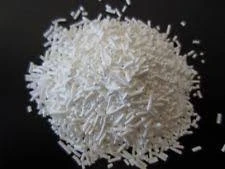
phosphoric acid types
Understanding the Types of Phosphoric Acid
Phosphoric acid, a key chemical compound with the formula H₃PO₄, is pivotal across various industries due to its versatile properties. It plays a crucial role in agriculture, food industry, pharmaceuticals, and manufacturing processes. This article delves into the types of phosphoric acid, highlighting their characteristics and applications.
1. Food-Grade Phosphoric Acid
One of the most well-known types of phosphoric acid is food-grade phosphoric acid, which is commonly used as an acidulant in the food and beverage industry. It adds a tangy flavor to products such as cola, while also serving as a preservative, helping to regulate pH levels and inhibit microbial growth. Food-grade phosphoric acid is subjected to strict purity standards to ensure its safety for consumption. As a result, it is a crucial component in many processed foods and drinks, boosting flavor and ensuring a longer shelf life.
2. Technical-Grade Phosphoric Acid
Technical-grade phosphoric acid is often utilized in industrial applications. This grade is not meant for food consumption and contains higher levels of impurities. It is primarily used in manufacturing fertilizers, detergents, and various chemical intermediates. In the production of fertilizers, phosphoric acid serves as a source of phosphorus, which is an essential nutrient for plant growth. Furthermore, technical-grade phosphoric acid is also used in metal treatment processes, where it helps to clean surfaces and prepare metals for further processing, such as galvanization or coating.
3
. Pharmaceutical-Grade Phosphoric Acidphosphoric acid types

Pharmaceutical-grade phosphoric acid meets even stricter purity requirements to ensure its suitability for medicinal applications. This grade is used in the production of pharmaceuticals and dietary supplements, acting as a pH adjuster and buffering agent. It is integral in the formulation of various medications, including those that manage gastric acid levels. The high purity of pharmaceutical-grade phosphoric acid ensures that it does not introduce harmful contaminants into medical products, making it essential for healthcare and pharmaceutical industries.
4. Ortho, Meta, and Pyrophosphoric Acid
Phosphoric acid can be further classified based on its molecular structure into ortho-, meta-, and pyrophosphoric acids. Ortho-phosphoric acid (H₃PO₄) is the most common form, widely used in agriculture and the food industry. Meta-phosphoric acid (HPO₃) is less common but finds usage in specific industrial applications, often as a dehydrating agent. Pyrophosphoric acid (H₄P₂O₇), which is formed by the condensation of two molecules of ortho-phosphoric acid, is utilized in various specialized applications, including chemical synthesis and as a catalyst in certain reactions.
5. Applications in Agriculture
Phosphoric acid's significance in agriculture cannot be understated. As a precursor to phosphate fertilizers, it provides vital nutrients that support crop growth and yield. Various fertilizers, such as monoammonium phosphate (MAP) and diammonium phosphate (DAP), are derived from phosphoric acid. These fertilizers improve soil quality and plant health, contributing to food security globally. The use of phosphoric acid in sustainable farming practices has also gained traction, as it aids in nutrient release and enhances soil fertility.
Conclusion
Phosphoric acid is a multifaceted chemical with diverse types catering to specific needs across industries. From food and pharmaceuticals to agriculture and manufacturing, its importance is evident in everyday products and industrial processes. Understanding the different types of phosphoric acid and their applications can help industries harness its full potential while ensuring safety and efficiency in their processes.
-
Why Glacial Acetic Acid Food Grade Is Essential in FlavorNewsMay.26,2025
-
Surging Export Growth of Food Additives in ChinaNewsMay.26,2025
-
How Ammonium Nitrate Fertilizer Boosts Crop YieldsNewsMay.26,2025
-
How 1,2,3-Benzotriazole Shields Plastics from UV DegradationNewsMay.26,2025
-
Cyanide in Gold Mining: Protecting People and the PlanetNewsMay.26,2025
-
Aluminum Hydroxide in Modern Sunscreen FormulationsNewsMay.26,2025
-
Understanding Synthetic Rubber OptionsNewsApr.27,2025
Hebei Tenger Chemical Technology Co., Ltd. focuses on the chemical industry and is committed to the export service of chemical raw materials.
-

view more DiethanolisopropanolamineIn the ever-growing field of chemical solutions, diethanolisopropanolamine (DEIPA) stands out as a versatile and important compound. Due to its unique chemical structure and properties, DEIPA is of interest to various industries including construction, personal care, and agriculture. -

view more TriisopropanolamineTriisopropanolamine (TIPA) alkanol amine substance, is a kind of alcohol amine compound with amino and alcohol hydroxyl, and because of its molecules contains both amino and hydroxyl. -

view more Tetramethyl Thiuram DisulfideTetramethyl thiuram disulfide, also known as TMTD, is a white to light-yellow powder with a distinct sulfur-like odor. It is soluble in organic solvents such as benzene, acetone, and ethyl acetate, making it highly versatile for use in different formulations. TMTD is known for its excellent vulcanization acceleration properties, which makes it a key ingredient in the production of rubber products. Additionally, it acts as an effective fungicide and bactericide, making it valuable in agricultural applications. Its high purity and stability ensure consistent performance, making it a preferred choice for manufacturers across various industries.











